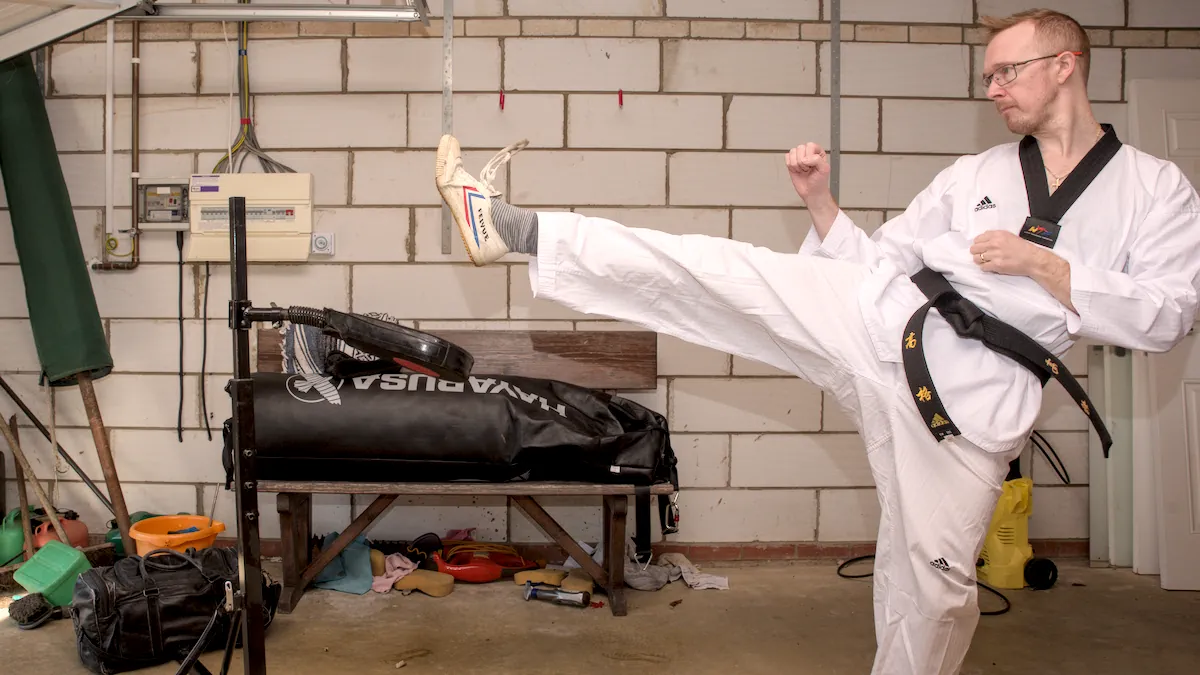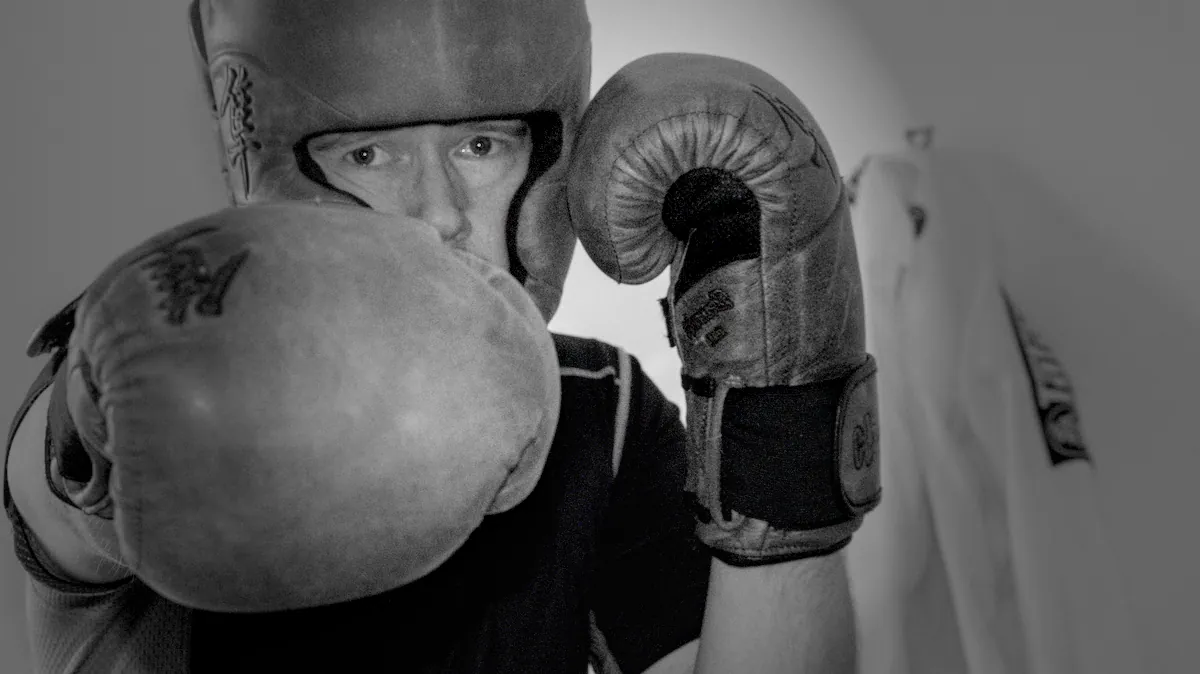There are so many martial arts styles to choose from and lots of conflicting advice about which style is best for MMA. Instead of adding another voice into the mix, let’s look at the data. What martial arts styles do the best UFC champions learn?
I reviewed the fighters, their styles, and their title defenses from the UFC site. The results below show every UFC champion with 3 title defenses or more and the martial arts they practice. See what the best fighters in the world tell us about which style to learn.
We also ranked the best martial arts for self-defense. Read that next!
| Name | Title Defenses | Martial Art Style |
|---|---|---|
| Demetrious Johnson | 11 | Wrestling, Muay Thai |
| Jon Jones | 11 | Wrestling and MMA |
| Anderson Silva | 10 | Muay Thai, BJJ, Taekwondo |
| Georges St-Pierre | 9 | Karate, BJJ |
| Jose Aldo | 7 | BJJ, Muay Thai |
| Matt Hughes | 7 | Wrestling |
| Israel Adesanya | 5 | Kickboxing |
| Tito Ortiz | 5 | Wrestling |
| Kamaru Usman | 5 | Wrestling, BJJ |
| Alexander Volkanovski | 5 | Wrestling, BJJ, Muay Thai |
| Stipe Miocic | 4 | Boxing, Wrestling |
| Chuck Liddell | 4 | Kajukenbo, Karate, Wrestling |
| Frank Shamrock | 4 | Submission Fighting |
| Cain Velasquez | 4 | Wrestling, BJJ |
| Randy Couture | 4 | Wrestling |
| Tyron Woodley | 4 | Wrestling, BJJ |
| Pat Miletich | 4 | Wrestling, Karate, BJJ |
| BJ Penn | 3 | BJJ |
| Chris Weidman | 3 | BJJ, Wrestling |
| Max Holloway | 3 | Kickboxing |
| Benson Henderson | 3 | Taekwondo, BJJ, Wrestling |
| Tim Sylvia | 3 | Wrestling, Boxing |
| Aljamain Sterling | 3 | Wrestling, BJJ |
| Frankie Edgar | 3 | Wrestling, BJJ, Boxing |
| Khabib Nurmagomedov | 3 | Wrestling, Sambo, Judo |
Which Martial Arts Do UFC Champions Learn?
There’s something about a champion who can defend his belt a few times. For a moment in time, they seem indestructible, as if they can’t lose. A new champion, on the other hand, is just a question mark, “Was it just luck?” “Can they defend the belt?”
So, rather than analyzing every fighter who has ever won a belt, I looked at the data for fighters who won and defended it at least three times.
The results are 25 fighters, 127 title defenses, and eleven martial arts. Here are the styles studied by UFC champions:
- BJJ
- Boxing
- Judo
- Kajukenbo
- Karate
- Kickboxing
- Muay Thai
- Sambo
- Submission Fighting
- Taekwondo
- Wrestling
“Is Wing Chun effective for MMA?” “What about krav maga?” “What about [insert your favorite martial art].”
Sorry, there are no true UFC champions training those styles. It doesn’t necessarily mean that those styles are the worst martial arts for MMA or that you shouldn’t learn them. It means that if you want to achieve the top level of MMA, look at the styles above.
But does that mean you can choose any of the martial arts above?
No, it turns out that not all styles were created equal (who could have guessed). For example, Kajukenbo only appeared once on this list. It’s a blend of Karate, judo, kempo, and boxing, developed in Hawaii. So, although it may sound cool, I wouldn’t recommend you find your nearest Kajukenbo club if you want to become a professional fighter.
The same goes for Taekwondo, which appeared twice, or judo, which only appeared once. Let’s distill all the numbers down and answer the question you want to know: What are the best martial arts for MMA?
The Best Martial Arts for MMA According to UFC Champions
1. Wrestling
Wrestling should be your first choice. It appeared 18 times in the data, making it the most practiced martial art style among UFC champions. Those that didn’t have a wrestling base almost always had BJJ instead, but ideally, you need both.
Why is wrestling so important to MMA?
Joe Rogan has mentioned it many times on his podcast, “Wrestling is the greatest skill to have in MMA because wrestling dictates where the fight takes place.”
It isn’t only that a wrestler can decide to take the fight to the ground whenever they want, but they also get to dictate the range when standing up. At any moment, they can come in close to grappling range, and there isn’t much you can do about it without some wrestling skills of your own.
This is why great strikers often get beaten by more one-dimensional wrestlers – think Connor McGregor vs Khabib or Ngannou vs. Stipe.
Wrestling training is pretty grueling, too, which is the perfect preparation for time in the cage or octagon. And if you live in the US, the standard of wrestling at the high school and collegiate level is really high, especially when you compare it to the local Dojo where the ‘master’ may or may not have any real fighting experience or skills.
2. Brazillian Jiu-Jitsu
The UFC was created as a platform to showcase BJJ, and that hasn’t changed over the 30 years it’s been around.
In the early days, Royce Gracie could beat everyone because few fighters had any experience fighting on the ground. Even today, fighters who don’t have a ground game are fair game to be taken down and dominated. Think about the greatest UFC knock-out artist, Derek Lewis, when he fought Jailton Almeida in November 2023.
Most professional MMA fighters now have some jiu-jitsu experience. 13 of the greatest UFC champions have BJJ black belts. It’s not only that they need to know how to win a fight that goes to the ground. It’s also defensive. Basic BJJ skills will help you to survive and not get submitted by a jiu-jitsu fighter.
So even if you’re a striker, if you have wrestling skills, as mentioned above, it will take some time to get you down to the floor. Whatever time is left is what they have to work with to submit you. If you have a good guard and can defend their submission attempts, you might last till the round ends and start the next round on your feet.
Then, your striking skills will come into play.
3. Muay Thai
After all that grappling and ground fighting, it makes sense that a stand-up style would be the third most popular martial art practiced by UFC champions.
You find Karate and boxing among the top 25 UFC champs, but Muay Thai achieved 33 title defenses, compared to only 11 for boxing and a more respectable 17 for Karate.
Although there were only four fighters with Muay Thai in the data, they were four of the most dominant fighters of all time. Technically, you might add kickboxer to those numbers, as Muay Thai is a form of kickboxing that would make six fighters and 41 title defenses!
So why is Muay Thai so much more represented than other forms of striking?
- Muay Thai is a complete striking art: hands, feet, elbows, and knees.
- Muay Thai has a strong tradition of competition.
- Muay Thai leg kicks are a tool few styles teach.
Consider Taekwondo and boxing, two highly one-dimensional fighting styles, one entirely with the hands and the other entirely with the feet, and It becomes obvious why they aren’t so popular among UFC champions. Karate and Kung Fu, which use more striking weapons, don’t have a strong tradition of regular full-contact competitions.
Ever heard of a professional karate or kung fu league?
Leg kicks are a third reason Thai Kickboxing is the peak of MMA striking. They are a must-have part of any pro fighter’s arsenal and can stop a fight or make you unable to stand. Remember Edson Barboza vs. Rafaelo Oliveira?
Three Martial Arts for MMA
Sure, there will always be some freak who destroys everyone and doesn’t practice any of the styles above, but those are the outliers, the exceptions to the rule. Look at Derek Lewis, for example. He’s predominantly a boxer and holds the UFC record for the most wins by knockout, but he’s never won a belt in the UFC.
Would he have beaten Daniel Cormier and won the heavyweight belt if he had been a wrestler first? Perhaps. And maybe he would have beaten Cyril Gane if he had chosen Muay Thai.
Anyone who learns these martial arts: wrestling, Muay Thai, and Brazillian jiu-jitsu gets a ‘complete fighting style,’ the skills to win the fight wherever it goes.
- On the feet, he has the strikes from kickboxing.
- He can wrestle to take the fight to the ground
- BJJ lets him finish the fight on the floor
So go get training! I’ll look out for you as a future hall of famer.






